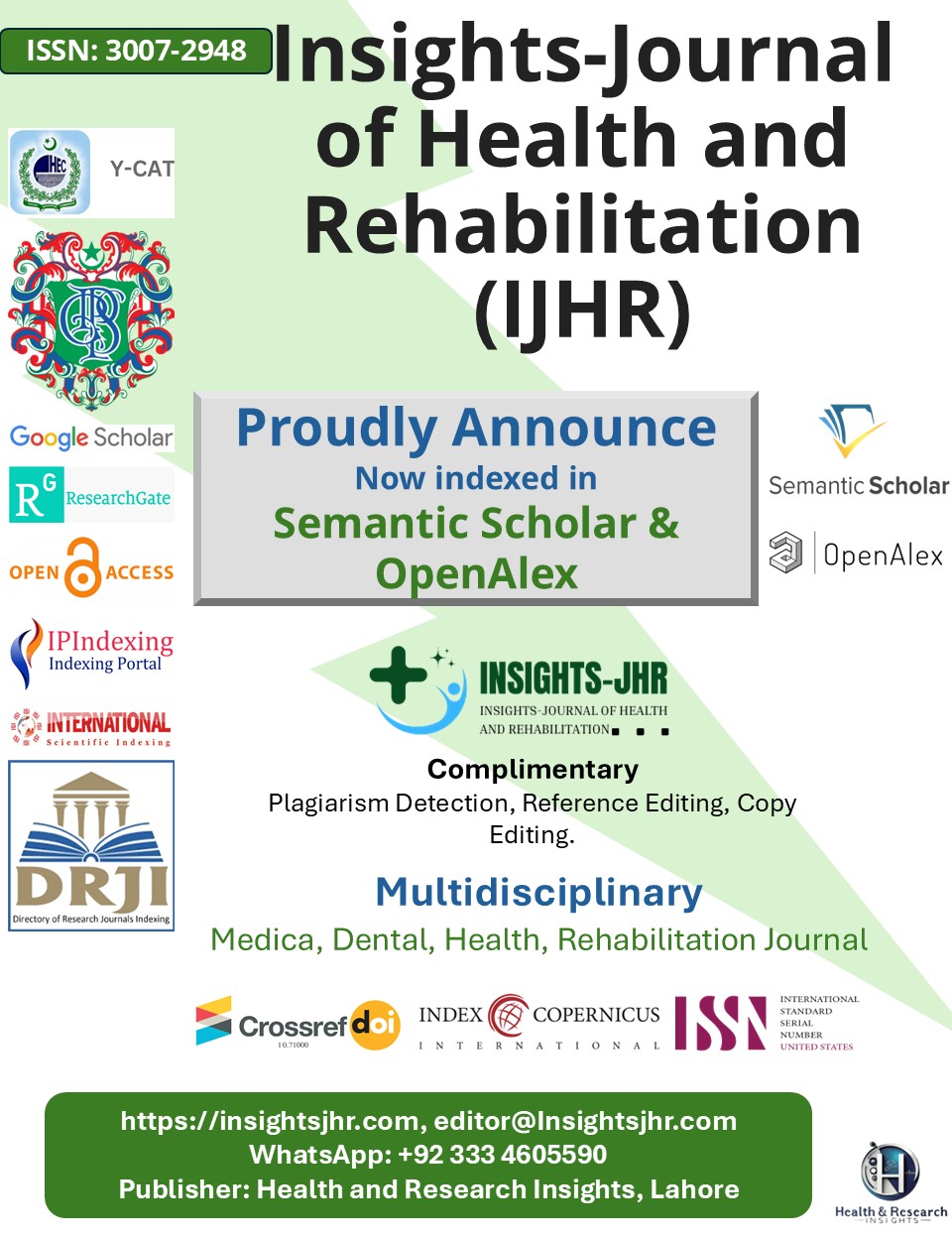FREQUENCY OF PATIENTS MEETING KIDNEY DISEASE OUTCOMES QUALITY INITIATIVE CRITERIA FOR SERUM CALCIUM, PHOSPHORUS, AND PARATHYROID HORMONE LEVELS ON MAINTENANCE HEMODIALYSIS PRESENTING AT CAPITAL DEVELOPMENT AUTHORITY HOSPITAL, ISLAMABAD
DOI:
https://doi.org/10.71000/0nxe1y93Keywords:
Calcium, Hemodialysis, Kidney Diseases, Parathyroid Hormone, Phosphorus, Renal Insufficiency, Treatment OutcomeAbstract
Background: Chronic kidney disease patients on maintenance hemodialysis are vulnerable to mineral and bone disorders, which significantly contribute to morbidity and mortality. Monitoring and achieving recommended biochemical targets for calcium, phosphorus, and parathyroid hormone (PTH) levels are vital in improving clinical outcomes. The Kidney Disease Outcomes Quality Initiative (KDOQI) provides standardized guidelines for mineral metabolism management. Evaluating patient adherence to these targets allows healthcare providers to identify care gaps and implement effective treatment strategies.
Objective: To assess the frequency of patients meeting KDOQI criteria for serum calcium, phosphorus, and PTH levels among those undergoing maintenance hemodialysis at Capital Development Authority Hospital, Islamabad.
Methods: A descriptive cross-sectional study was conducted over six months in the Nephrology Department at CDA Hospital, Islamabad. After obtaining ethical clearance, 190 patients aged 30–80 years on maintenance hemodialysis were recruited through non-probability consecutive sampling. Data on serum calcium, phosphorus, and intact PTH were collected and analyzed using standardized biochemical assays. Patients meeting the KDOQI targets were identified. SPSS Version 20 was used for statistical analysis. Mean and standard deviation were calculated for continuous variables, while categorical variables were presented as frequencies and percentages. Chi-square and Fisher's exact tests were applied, with a p-value ≤0.05 considered statistically significant.
Results: The mean age of participants was 58.2 ± 11.9 years; 57.9% (n=110) were male. Among the cohort, 63.2% (n=120) met calcium targets, 56.8% (n=108) achieved phosphorus targets, and only 28.4% (n=54) attained PTH goals. Hemodialysis adherence was significantly associated with calcium control (84.2% vs. 44.3%, p<0.05), as was vitamin D/calcium supplement use (85.8% vs. 64.3%, p<0.05). Thrice-weekly hemodialysis improved calcium (49.2%) and phosphorus (45.4%) target achievement compared to once-weekly sessions (3.3% and 9.3%, respectively). No significant associations were noted with PTH outcomes.
Conclusion: While a majority of patients achieved KDOQI objectives for calcium and phosphorus, PTH control remained inadequate. Improved dialysis adherence, supplement compliance, and higher dialysis frequency were associated with better calcium regulation. Focused interventions are needed to enhance PTH management.
Downloads
Published
Issue
Section
License
Copyright (c) 2025 Saira Ashraf, Zulfiqar Ali (Author)

This work is licensed under a Creative Commons Attribution-NonCommercial-NoDerivatives 4.0 International License.







